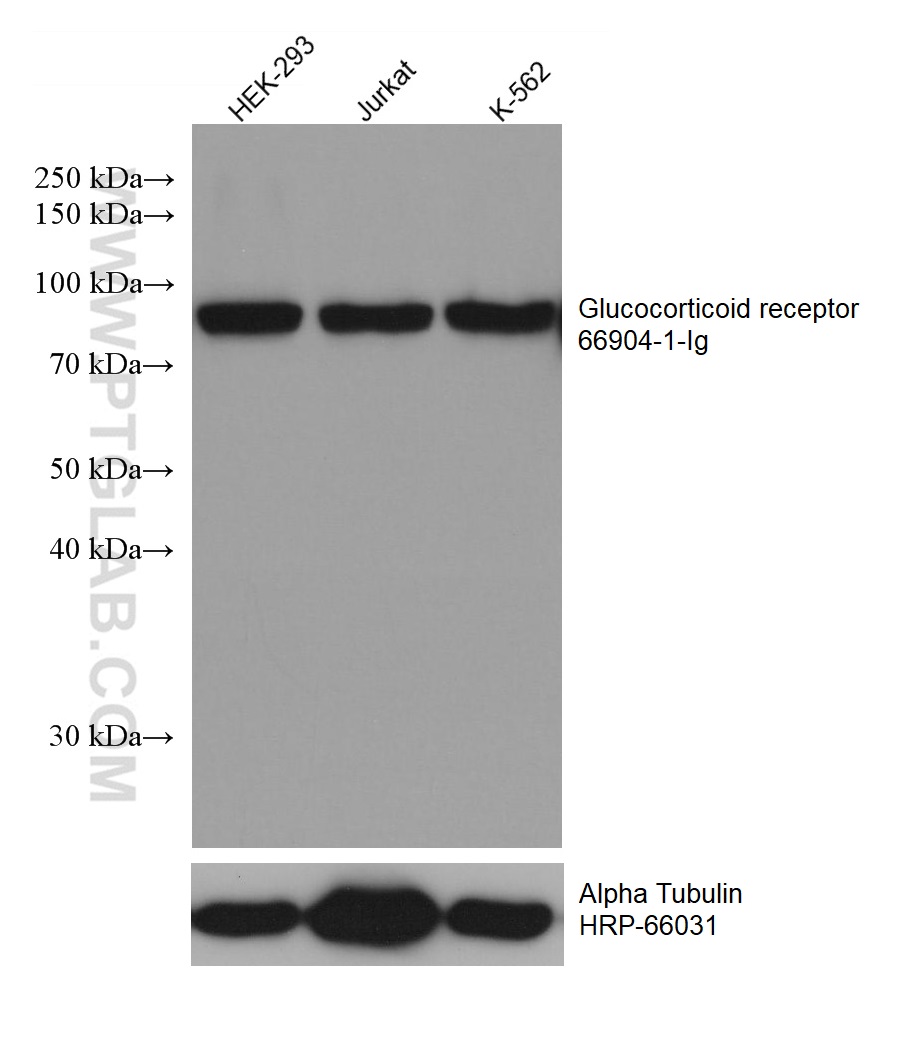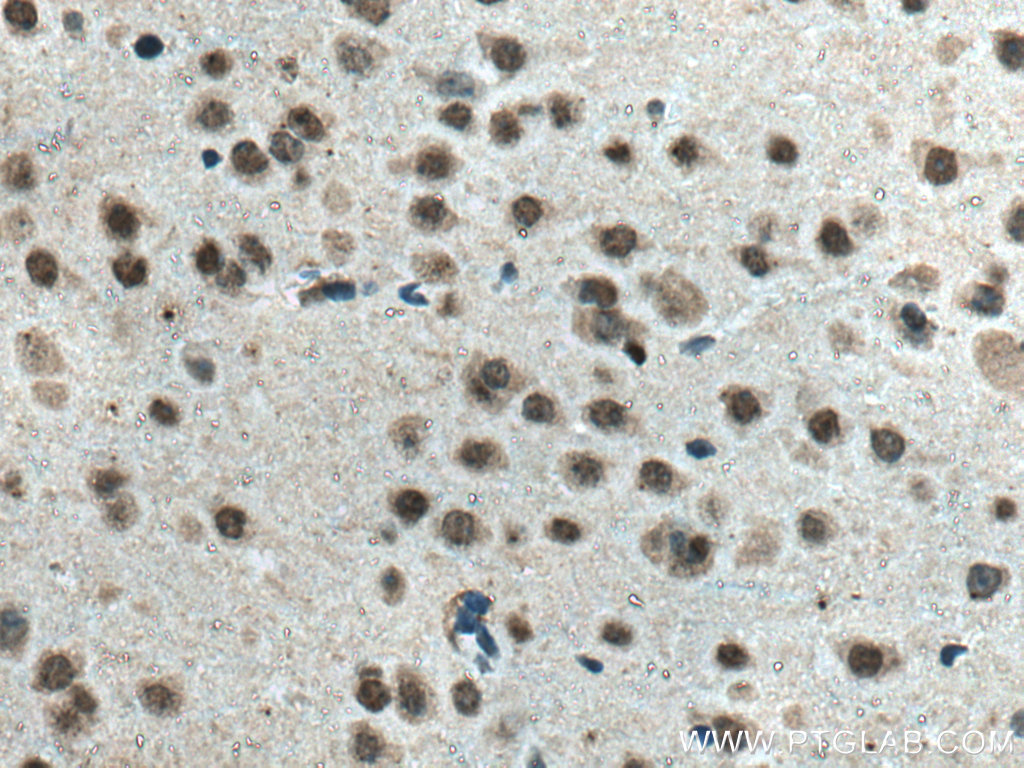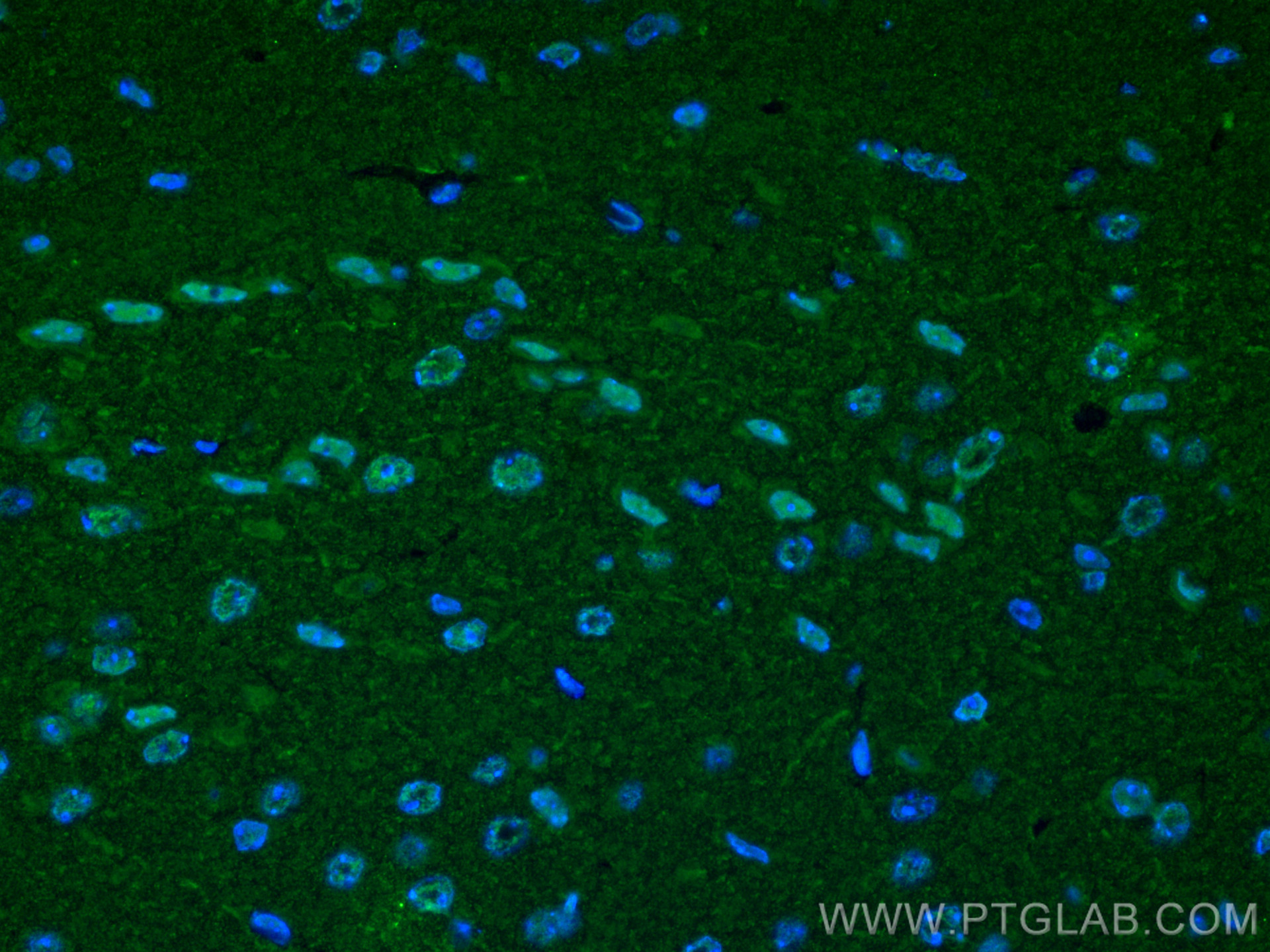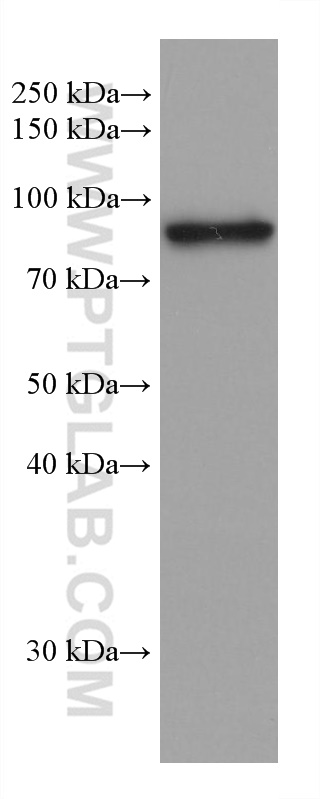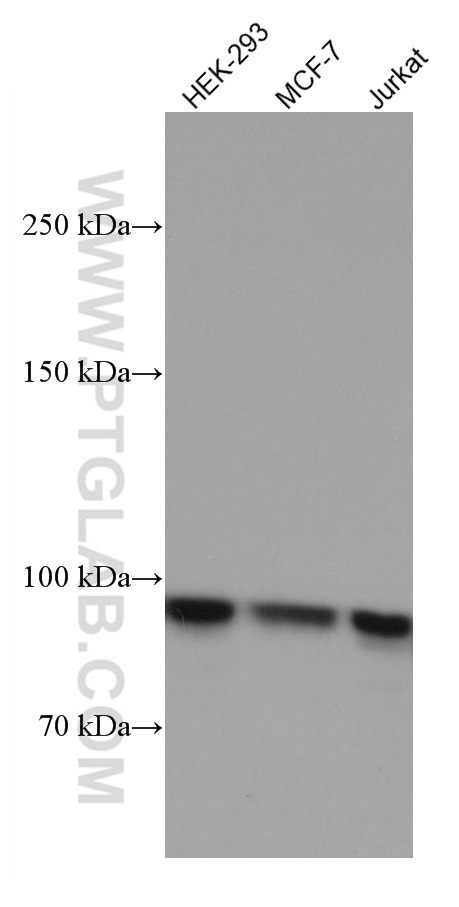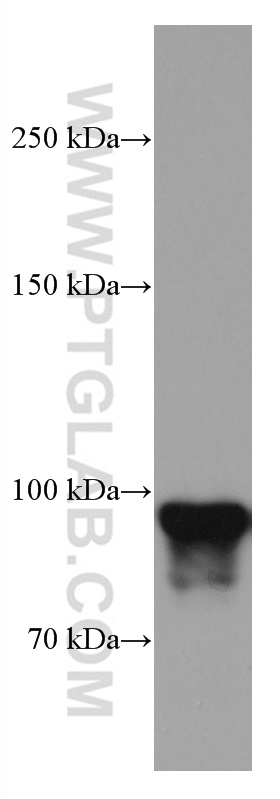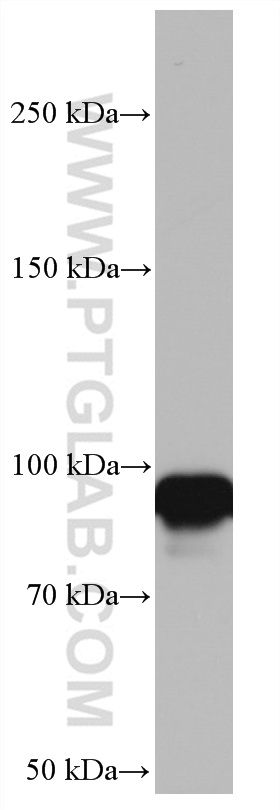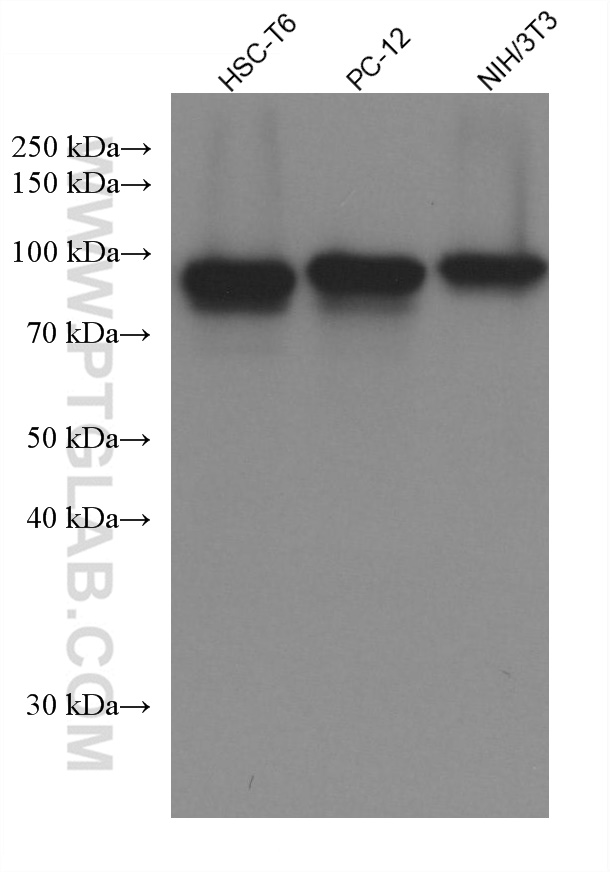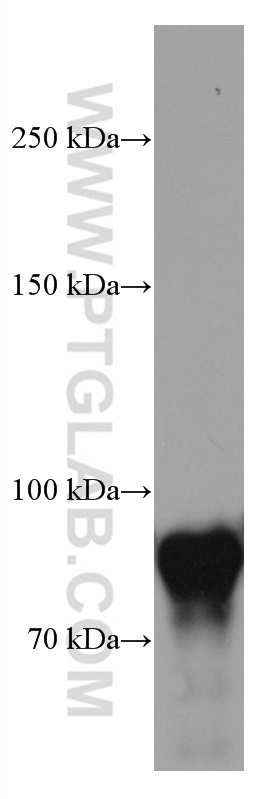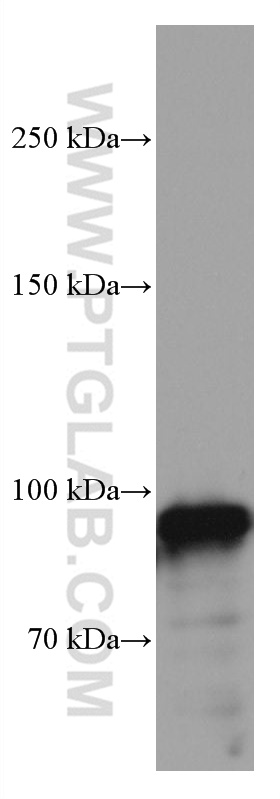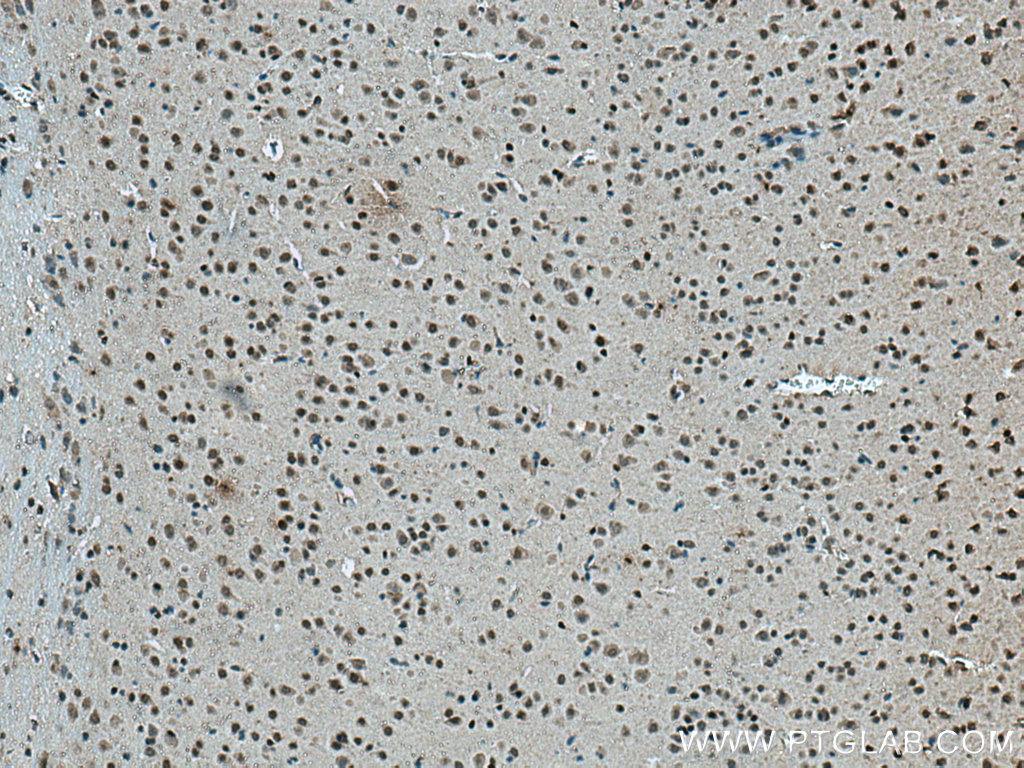验证数据展示
经过测试的应用
| Positive WB detected in | HEK-293 cells, HepG2 cells, HeLa cells, HSC-T6 cells, NIH/3T3 cells, 4T1 cells, MCF-7 cells, Jurkat cells, K-562 cells, PC-12 cells |
| Positive IHC detected in | mouse brain tissue Note: suggested antigen retrieval with TE buffer pH 9.0; (*) Alternatively, antigen retrieval may be performed with citrate buffer pH 6.0 |
| Positive IF-P detected in | mouse brain tissue |
推荐稀释比
| 应用 | 推荐稀释比 |
|---|---|
| Western Blot (WB) | WB : 1:20000-1:100000 |
| Immunohistochemistry (IHC) | IHC : 1:150-1:600 |
| Immunofluorescence (IF)-P | IF-P : 1:200-1:800 |
| It is recommended that this reagent should be titrated in each testing system to obtain optimal results. | |
| Sample-dependent, Check data in validation data gallery. | |
产品信息
66904-1-Ig targets Glucocorticoid receptor in WB, IHC, IF-P, ELISA applications and shows reactivity with human, mouse, rat samples.
| 经测试应用 | WB, IHC, IF-P, ELISA Application Description |
| 文献引用应用 | WB, IHC, IF |
| 经测试反应性 | human, mouse, rat |
| 文献引用反应性 | human, mouse |
| 免疫原 |
CatNo: Ag28431 Product name: Recombinant human Glucocorticoid receptor protein Source: e coli.-derived, PET28a Tag: 6*His Domain: 1-350 aa of BC015610 Sequence: MDSKESLTPGREENPSSVLAQERGDVMDFYKTLRGGATVKVSASSPSLAVASQSDSKQRRLLVDFPKGSVSNAQQPDLSKAVSLSMGLYMGETETKVMGNDLGFPQQGQISLSSGETDLKLLEESIANLNRSTSVPENPKSSASTAVSAAPTEKEFPKTHSDVSSEQQHLKGQTGTNGGNVKLYTTDQSTFDILQDLEFSSGSPGKETNESPWRSDLLIDENCLLSPLAGEDDSFLLEGNSNEDCKPLILPDTKPKIKDNGDLVLSSPSNVTLPQVKTEKEDFIELCTPGVIKQEKLGTVYCQASFPGANIIGNKMSAISVHGVSTSGGQMYHYDMNTASLSQQQDQKPI 种属同源性预测 |
| 宿主/亚型 | Mouse / IgG1 |
| 抗体类别 | Monoclonal |
| 产品类型 | Antibody |
| 全称 | nuclear receptor subfamily 3, group C, member 1 (glucocorticoid receptor) |
| 别名 | NR3C1, 1D9A9, GCCR, GCR, GR |
| 计算分子量 | 86 kDa |
| 观测分子量 | 97 kDa |
| GenBank蛋白编号 | BC015610 |
| 基因名称 | Glucocorticoid receptor |
| Gene ID (NCBI) | 2908 |
| RRID | AB_2857354 |
| 偶联类型 | Unconjugated |
| 形式 | Liquid |
| 纯化方式 | Protein G purification |
| UNIPROT ID | P04150 |
| 储存缓冲液 | PBS with 0.02% sodium azide and 50% glycerol, pH 7.3. |
| 储存条件 | Store at -20°C. Stable for one year after shipment. Aliquoting is unnecessary for -20oC storage. |
背景介绍
Glucocorticoid receptor (GR, or GCR) also known as NR3C1 (nuclear receptor subfamily 3, group C, member 1) is a receptor for glucocorticoids, which owns a dual mode of action: as a transcription factor that binds to glucocorticoid response elements (GRE) and as a modulator of other transcription factors. It is involved in cell proliferation and differentiation and specifically implicated in newborn birth weight, thus providing a biological mechanism by which NR3C1 expression may influence birth weight (PMID:22810058).
实验方案
| Product Specific Protocols | |
|---|---|
| IF protocol for Glucocorticoid receptor antibody 66904-1-Ig | Download protocol |
| IHC protocol for Glucocorticoid receptor antibody 66904-1-Ig | Download protocol |
| WB protocol for Glucocorticoid receptor antibody 66904-1-Ig | Download protocol |
| Standard Protocols | |
|---|---|
| Click here to view our Standard Protocols |
发表文章
| Species | Application | Title |
|---|---|---|
Antioxidants (Basel) Continuous Monochromatic Blue Light Exacerbates High-Fat Diet-Induced Kidney Injury via Corticosterone-Mediated Oxidative Stress | ||
Am J Physiol Cell Physiol Dual-Specificity Phosphatase 29 is Induced During Neurogenic Skeletal Muscle Atrophy and Attenuates Glucocorticoid Receptor Activity in Muscle Cell Culture. | ||
Heliyon Comparison of CUMS at different pregnancy stages, maternal separation, and their effects on offspring in postpartum depression mouse models | ||
Cell Death Dis Targeting EGFR-binding protein SLC7A11 enhancing antitumor immunity of T cells via inducing MHC-I antigen presentation in nasopharyngeal carcinoma | ||
J Neuroendocrinol Corticosteroid-regulated gene transcription in SH-SY5Y-derived neurons: Insights into the mineralocorticoid and glucocorticoid receptor-mediated response | ||
Ecotoxicol Environ Saf Dim blue light at night worsens high-fat diet-induced kidney damage via increasing corticosterone levels and modulating the expression of circadian clock genes |

